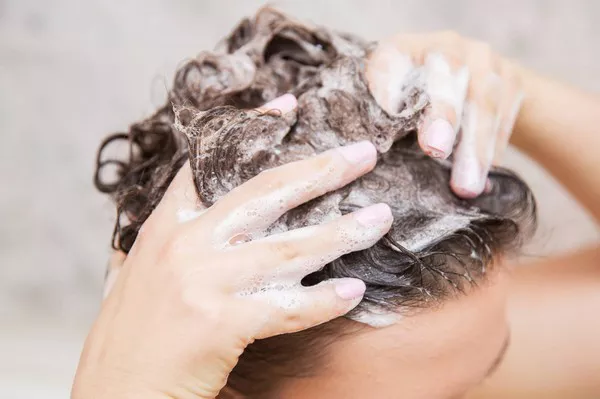Hair loss is a common concern for many men, and with the advancement of technology and research, several treatments have emerged to address this issue. Whether you’re experiencing the early signs of hair thinning or have already lost a significant amount of hair, there are various options available. In this article, we will explore some of the best male hair loss treatments in 2023, considering effectiveness, safety, and user satisfaction.
1. Finasteride (Propecia): The Pill That Targets DHT
One of the most popular prescription medications for male pattern baldness is finasteride, commonly known as Propecia. Finasteride works by inhibiting the production of dihydrotestosterone (DHT), a hormone linked to hair loss. By reducing DHT levels, it helps slow down hair loss and, in some cases, promotes hair regrowth. It’s essential to note that finasteride may take several months to show noticeable results, and its use should be continued to maintain benefits.
2. Minoxidil: Topical Solution for Regrowth
Minoxidil, available over-the-counter, is a topical solution that has been a staple in hair loss treatment for decades. It stimulates hair follicles, promoting regrowth and preventing further hair loss. Users typically apply minoxidil directly to the scalp twice daily. While it may not work for everyone, many users report positive results. It’s crucial to be consistent with application and patient as results may take a few months to become evident.
3. Low-Level Laser Therapy (LLLT): Harnessing the Power of Light
Low-level laser therapy is a non-invasive treatment that uses red light to stimulate hair follicles. This therapy can be administered through laser caps, combs, or helmets. The light energy is believed to increase blood flow to the scalp and encourage hair regrowth. While the exact mechanisms are not fully understood, studies suggest that LLLT may be a promising option for those seeking non-pharmaceutical alternatives.
4. Hair Transplantation: Surgical Restoration
For those looking for a more permanent solution, hair transplantation remains a viable option. This surgical procedure involves taking hair follicles from a donor site (usually the back or sides of the head) and implanting them into the balding areas. Advances in technology, such as follicular unit extraction (FUE), have made hair transplants more precise and minimally invasive. However, it’s essential to consult with a qualified surgeon to determine if you are a suitable candidate for this procedure.
5. Platelet-Rich Plasma (PRP) Therapy: Harnessing Your Body’s Healing Powers
Platelet-rich plasma therapy involves drawing a small amount of the patient’s blood, processing it to concentrate the platelets, and then injecting it into the scalp. The growth factors present in platelets are believed to stimulate hair follicles and promote hair regrowth. While more research is needed to fully understand the long-term effectiveness of PRP therapy, some individuals have reported positive results.
Frequently Asked Questions
Q1: Are these treatments suitable for everyone?
A1: Not all treatments are suitable for every individual. Factors such as the cause of hair loss, overall health, and personal preferences play a role in determining the most appropriate treatment. Consultation with a healthcare professional or a hair loss specialist is crucial to assess eligibility and tailor a treatment plan.
Q2: Do these treatments have side effects?
A2: Each treatment option may have its own set of potential side effects. For example, finasteride may cause sexual side effects in some men, and minoxidil may lead to skin irritation. It’s essential to be aware of the potential risks and discuss them with a healthcare provider before starting any treatment.
Q3: How long does it take to see results?
A3: The timeline for visible results varies among treatments and individuals. Finasteride and minoxidil may take several months before noticeable changes occur, while hair transplantation provides more immediate results. Patience and consistency in following the prescribed treatment plan are key to achieving the best outcomes.
Q4: Can I use multiple treatments simultaneously?
A4: In some cases, combining treatments may be recommended for enhanced results. However, it’s crucial to consult with a healthcare professional before using multiple treatments simultaneously to ensure compatibility and avoid potential adverse effects.
Q5: Are there natural remedies for hair loss?
A5: While some natural remedies, such as certain dietary supplements and essential oils, are often touted as beneficial for hair health, their efficacy is not universally supported by scientific evidence. It’s advisable to approach natural remedies with caution and consult with a healthcare professional before incorporating them into a hair loss management plan.
Conclusion: Taking the First Step Towards Hair Restoration
The best male hair loss treatments in 2023 offer a range of options, from pharmaceutical interventions like finasteride and minoxidil to surgical procedures such as hair transplantation and innovative therapies like low-level laser therapy and platelet-rich plasma. The key to successful hair restoration lies in early intervention, personalized treatment plans, and consistency in following the prescribed regimen. Before embarking on any hair loss treatment journey, individuals should consult with healthcare professionals or qualified specialists to determine the most suitable approach for their unique circumstances.

